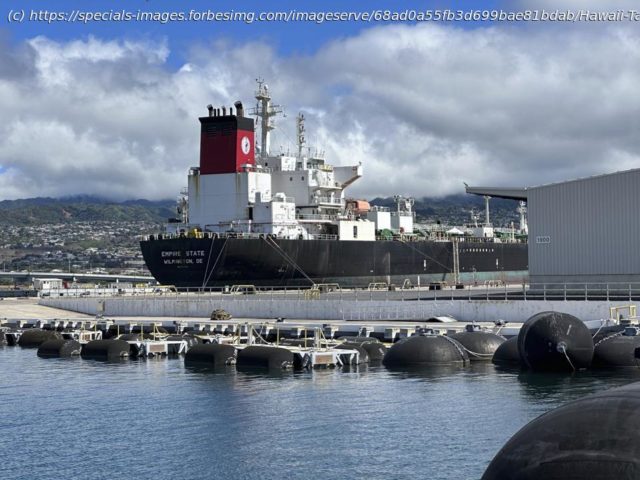A good target for Korea’s promised $150 billion boost to American shipbuilding is for the Navy to get enough tankers to offset the lost Red Hill Bulk Fuel Storage Depot.
As U.S. President Donald Trump hosted South Korean President Lee Jae Myung for a wide-ranging summit meeting this week, some $150 billion for U.S. shipbuilding-related investments is on the line. With both the U.S./Korea defense alliance and a $350 billion trade package up for discussion, South Korea can address several challenges by focusing on building mid-sized Korean tankers in the U.S., ensuring the American military remains fueled up and ready to go.
Where fuel is concerned, the Navy’s logistical situation in the Pacific is, at best, perilous. In 2022, after years of mismanagement at the Navy’s Red Hill Bulk Fuel Storage Facility ended up contaminating Hawaii’s water supply, the Department of Defense shut down the obsolete, World War II-era fuel depot. With some 250 million gallons of backup, battle-ready fuel storage gone, the U.S. Navy has struggled to articulate a warfighting strategy that accounts for either the lost fuel depot or for the Navy’s urgent need to freely move fuel around the Pacific in times of crisis.
The answer is easy—more ships. At a fundamental level, the U.S. Navy requires a lot more tankers. With Korea’s help, the U.S. can build more product tankers, guaranteeing that the U.S. military will not end up stranded in the central Pacific, lacking the fuel ships and aircraft need to deter China, Russia or, for that matter, quell certain rebellious Korean provinces.35 Korean Tankers—A Mobile, Hard-To-Target Red Hill Fuel Depot
As I wrote 15 years ago, the U.S. Navy has been slow to accept the logistical challenges of a contested Pacific. Rather than rush back in 2022 to mitigate America’s looming shortfall in Central Pacific battle fuel reserves, the Navy didn’t do anything.
But the Department of Defense has never clearly stated a goal for replacing the lost Red Hill fuel either, preferring, instead, to engage in a little bureaucratic legerdemain by committing to “reposition fuel stored at Red Hill by leveraging commercial infrastructure,” including U.
Start
United States
USA — mix 40 U. S. -Built Korean Tankers Can Help Make American Shipbuilding Great






